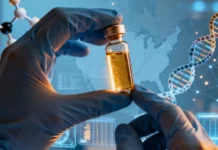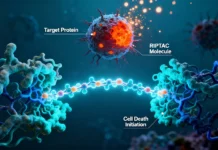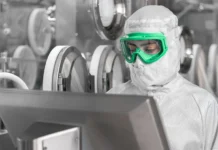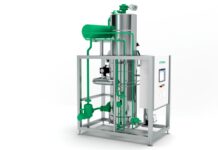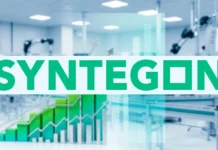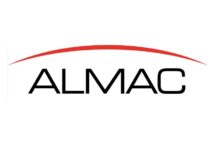The rise of next-gen therapeutics has fundamentally gone on to shape the modern pharmaceutical spectrum. Novel modalities like messenger RNA – mRNA vaccines and therapies, antibody drug conjugates (ADCs), and advanced cell and gene therapy (CGT) have gone on to unlock fresh possibilities when it comes to precision medicine, immuno-oncology, and rare disease treatment. At the center of these novel innovations lies the indispensable contribution when it comes to fine chemicals, which are highly specialized chemical substances that go on to form the foundation in terms of new drug classes, sophisticated conjugation techniques, and advanced delivery systems.
Let us explore what role fine chemical innovation plays when it comes to the development as well as commercialization of advanced therapeutics, the ever-shifting technical as well as regulatory landscape, and strategic options that are available for the fine chemicals industry as of 2025.
What are fine chemicals and pharmaceutical innovation?
Fine chemicals are indeed intricate, high-purity molecules along with intermediates that are produced on a relatively small scale, often through multistep and very highly controlled synthetic procedures. Unlike commodity chemicals, fine chemicals happen to be defined through their structural specificity, strict quality needs, and their major role as building blocks when it comes to active pharmaceutical ingredients (APIs), linkers, reagents in drug manufacturing, and delivery vehicles. The rising intricacies as well as specificity of the next generation of therapeutics have gone on to drive parallel evolution in terms of sophistication along with the strategic imperative of fine chemical supply.
Perfect precision oncology due to fine chemicals and antibody drug conjugates
Antibody drug conjugates represent an advanced class when it comes to targeted cancer therapy that blends the specificity of monoclonal antibodies along with the potent cytotoxicity as far as small-molecule drugs are concerned. This kind of development and manufacturing of ADCs happens to be the most chemistry-intensive part within modern pharma, depending on numerous categories of fine chemicals.
The creation when it comes to an ADC happens to involve three major chemical innovation areas. They are linker synthesis, site-specific conjugation, and payload production. Each one of them requires mastery of intricate, organic synthesis as well as bioconjugation chemistry, very careful evaluation and characterization, and strict purification.
The linker chemistry
Linkers happen to be specifically designed to remain balanced when it comes to systemic circulation while enabling the payload to be released only on internalization by the target cancer cells. Innovations within linker technology, like acid-sensitive hydroxide groups and protease-cleavable dipeptides, have enhanced safety profiles as well as the efficacy of ADCs. These linkers often need multi-step synthesis by way of demanding stereochemical as well as balanced needs.
Techniques in conjugation
It is well to be noted that advancements in chemical methods have transitioned the field from random to site-specific conjugation, in which the linker payload unit happens to be attached to a predetermined antibody location. This has gone on to improve pharmacokinetics and continuous product quality, which is indeed a necessity for regulatory approval. As of May 2025, there are more than 15 ADCs that are approved across the world and over 80 when it comes to advanced clinical trials, thereby reflecting a very strong and rising demand as far as highly specialized fine chemical inputs are concerned.
Cytotoxic payloads
The small molecules that are used as payloads are among the most potent substances that are handled within pharmaceutical manufacturing. The reproducible, safe, and high-purity synthesis of such kinds of molecules happens to be an area of ongoing chemical innovation.
Fine chemicals within mRNA therapeutics – the power of synthetic biology
The success when it comes to mRNA-based COVID-19 vaccines has indeed brought attention to the crucial role as far as fine chemicals in nucleic acid therapeutics are concerned. The manufacturing of mRNA vaccines as well as therapy goes on to depend on the capacity to produce major quantities of high-priority nucleotides as well as structurally optimized lipids.
Nucleotides that are modified
One of the major breakthroughs within the mRNA technology has been the development of modified nucleotides like pseudouridine along with N1-methylpseudouridine that enhance mRNA balance and decrease its immunogenicity. Producing these nucleotides at scale, and that too for pharmaceutical-grade specifications, is indeed a very intricate challenge, thereby requiring effective synthesis routes , strict purification methods, and a very robust evaluation technique in order to make sure of batch-to-batch consistency.
What are lipid nanoparticles?
Even more dramatic has been the shift in drug delivery, which is enabled by lipid nanoparticles. LNPs go on to encapsulate as well as safeguard fragile mRNA molecules, thereby facilitating their uptake by the target cells. The formulation when it comes to LNP goes on to depend on very finely engineered ionizable lipids, cholesterol, and PEGylated lipids. Every lipid component needs advanced synthetic chemistry in order to attain the right structure, functionalization, and purity.
Quality drivers
Success, when it comes to mRNA therapies, hinges mostly on the traceability as well as reproducibility of the fine chemical inputs. The impurities within nucleotides or lipids can go ahead and affect the efficacy and safety of the final product and its balance too. As the demand when it comes to mRNA therapeutics rises and goes beyond infectious diseases to oncology as well as rare genetic conditions, supply, as far as pharmaceutical-grade fine chemicals, is indeed a clear bottleneck and has to have a strategic focus.
The advanced cell and gene therapy – fine chemicals when it comes to essential enablers
Cell and gene therapy happens to be establishing new benchmarks when it comes to customized medicine, thereby offering curative potential for the once untreatable conditions. The helping role of fine chemicals in this spectrum happens to be multifaceted and extends beyond the gene-editing reagents, viral vector components, transfection agents, and self-culture supplements.
What are transfection and gene editing reagents?
The delivery when it comes to genetic materials within cells, whether in terms of CAR-T cell therapy or gene correction, needs very specialized cationic polymers, custom-synthesized oligonucleotides, and peptides. These kinds of reagents are optimized for transfection efficiency, less toxicity, and biocompatibility.
The viral vector chemistry
The large-scale production when it comes to viral vectors depends completely on high purity, helper plasmids, media additives, and buffer components. Fine chemicals are indeed very crucial when it comes to both upstream, known as expression systems, and downstream, which is purification along with stabilization processes.
Cryoprotectants along with media additives
In order to maintain cell viability within the manufacturing, transport, and storage, fine chemicals like DMSO and chemically defined media supplements are used. The demand when it comes to animal-free, GMP-compliant reagents has throttled the innovation part when it comes to sustainable as well as synthetic choices.
It is well to be noted that by May 2025, the approved cell and gene therapy products within the US as well as the EU had surpassed 19. As a matter of fact, there are hundreds more in the pipeline, hence driving the sustained growth that is needed for the next generation of fine chemicals.
What are the market trends as well as growth anticipations?
The global fine chemicals market when it comes to advanced therapeutics has already reached almost $7.2 billion in 2024 with robust growth, which is projected all through 2032 at a massive CAGR of 13.4%. All this goes on to outpace growth within traditional small molecule APIs and also reflects the rising complexity when it comes to drug pipelines.
| Therapeutic Modality | Projected CAGR |
| ADCs | 10.8% |
| mRNA Therapeutics | 16.2% |
| Cell & Gene Therapy | 14.3% |
It is well to be noted that Europe goes on to remain a major hub when it comes to high-value fine chemical development, specifically as far as mRNA applications and ADCs are concerned, because of its concentration of CDMOs along with regulatory expertise.
What are the technical innovations that are shaping the sector?
The untiring evolution when it comes to next-gen therapeutics has throttled parallel innovation as far as fine chemical manufacturing process design is concerned. There are many technical focus areas, which are indeed shaping the spectrum.
| Chemical Class | Primary Function | Example or Application |
| Linkers | Drug-antibody connection | Val-Cit, PEG-based linkers |
| Cytotoxic Agents | ADC payload | MMAE, DM1 |
| Modified Nucleotides | mRNA stabilization | Pseudouridine, N1-methylpseudouridine |
| Ionizable Lipids | mRNA/LNP delivery | ALC-0315, SM-102 |
| Transfection Agents | Gene/cell delivery | Polyethylenimine, cationic peptides |
Advanced insight, specific conjugation
The emergence of offsite-specific conjugation methodology, in which chemical linkers happen to be selectively attached to predetermined sites on bodies, has gone on to help more homogeneous ADC products that have enhanced pharmacokinetics and decreased off-target effects.
Next-generation lipid chemistry
Innovation, as far as lipid designs happens to be focused on elevating endosomal escape, decreasing immunogenicity, and increasing biodegradability. Chemists happen to be developing new phases of ionizable lipids along with PEG choices that have superior therapeutic profiles.
Modified nucleotides that are high purity
There are recent advances within synthetic methodology as well as purification technology that have gone on to enable large-scale, cost-effective production when it comes to modified nucleotides that are indeed a very critical supply challenge as the mRNA pipeline broadens.
Personalized cell culture media & supplements
The transition to chemically defined, animal-free media when it comes to cell therapies is indeed driving the synthesis of the new amino acids, small molecule elements, and vitamins, all of which are produced with very strict quality along with regulatory requirements.
Barriers when it comes to scaling as well as quality assurance
In spite of the rapid growth as well as innovation, there are many key challenges that remain.
Process scale-up as well as safety
There are many fine chemicals, especially cytotoxic ones, along with highly potent lipids that present occupational hazards and need very specific facilities and containment.
Quality, traceability, along with GMP compliance
The rise in regulatory scrutiny calls for an overall documentation, strict analytical validation, and a complete traceability of entire raw materials along with intermediates.
Geopolitical factors and supply chain risk
The globalized fine chemical supply chain is very sensitive when it comes to shortages in raw materials, export restrictions, and the quality alterations within suppliers.
Production that is sustainable
Environmental performance, along with waste minimization, which is already at a critical stage in Europe because of regulatory market pressures, happens to be increasingly important when it comes to global competitiveness.
The segmentation of the market
The distribution when it comes to global fine chemical demand throughout next-generation modalities as of 2025 happens to be as follows:
| Segment | Share |
| ADCs | 41% |
| mRNA Therapeutics | 31% |
| Cell & Gene Therapy | 24% |
| Other (oligos, peptides, etc.) | 4% |
Making Europe the strategic hub for fine chemicals
It is well to be noted that the established expertise of Europe as far as advanced organic synthesis, robust regulatory framework, and leading CDMO infra have all positioned it as a worldwide leader when it comes to the fine chemical segment for the next-gen therapeutics. The collaboration between pharmaceutical innovators and specialized chemical manufacturers is accelerating the translation of laboratory-scale chemistry into industry-scale and GMP-compliant supply chains.
Finally
The fact is that fine chemicals are the silent engines that are powering the most transformative medicines when it comes to our era. As the pharmaceutical pipelines transition towards ADC, mRNA therapy, and cell and gene therapy, the demand when it comes to innovative, personalized design by fine chemicals and high-purity innovations will go on to intensify. The coming years are going to reward those companies that are both established players and agile newcomers and that, by the way, can bridge the disciplines when it comes to bioconjugate technology, chemical synthesis, and regulatory compliance, thereby bringing new cures to the market in a much faster way and that too with more dependability that hasn’t been witnessed before.



